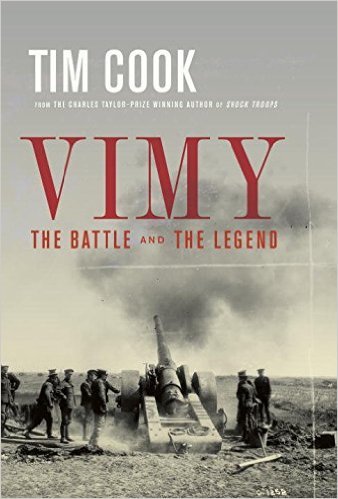What do you think?
Rate this book


488 pages, Hardcover
First published March 7, 2017
To stand on Vimy Ridge in the shadow of the memorial is to recognize that few other places in the world can make Canadians feel so proud. One also feels the weight of history and the presence of the dead. There is a palpable confluence of what we would like to forget and what we must remember. The ghosts walk this soil, as they did in Allward窶冱 dream, through the claustrophobic tunnels, treading carefully across the cratered battlegrounds, and with the faint touch of fingers on engraved names of the fallen. Vimy is also a place of enormous beauty. The pylons soar to the blue beyond, and the sculptures are intricate in their lines and evocative in their meanings. The creamy white and warm stone provokes strong emotion. The historical inscriptions are minimal, but the names of the missing 11,285 are monumental. Those searing marks in honour of the fallen are thousands of small scars on the stone, a reminder of the terrible loss and grief of the Great War. Tears come easily while standing on the memorial. These are not tears of uncontrollable grief but tears of something else, something more profound. They are the tears invoked by the memory of a grandfather, by a few lines from McCrae窶冱 窶廬n Flanders Fields,窶� and even by a surprising flash of patriotism. There is a power in the Vimy legend窶杯he ridge, the memorial, the meaning窶杯hat is not easily put into words. The memorial is for the dead, but it is remade generation after generation by the living. Canada was indeed forever changed by the Great War, but Vimy did not make the nation. It was the nation that made Vimy.
Vimy is a battleground of remembrance and forgetting, of constitution and reconstitution, of myth-making and nation-forging. It is a place of past sorrows and future hopes, at once tied to the Great War and to the larger history of Canada determining its own course and place in the world.
The Great War armistice on November 11, 1918 ended the killing on the Western Front, but the reverberations of those deaths, the mass trauma of more than 66,000 lost Canadians, has echoed through history. Canada was a nation of fewer than eight million... One can scarcely imagine the grief, as every city, town, village, and hamlet mourned for the boys and young and middle-aged men who marched off to war, never to return.